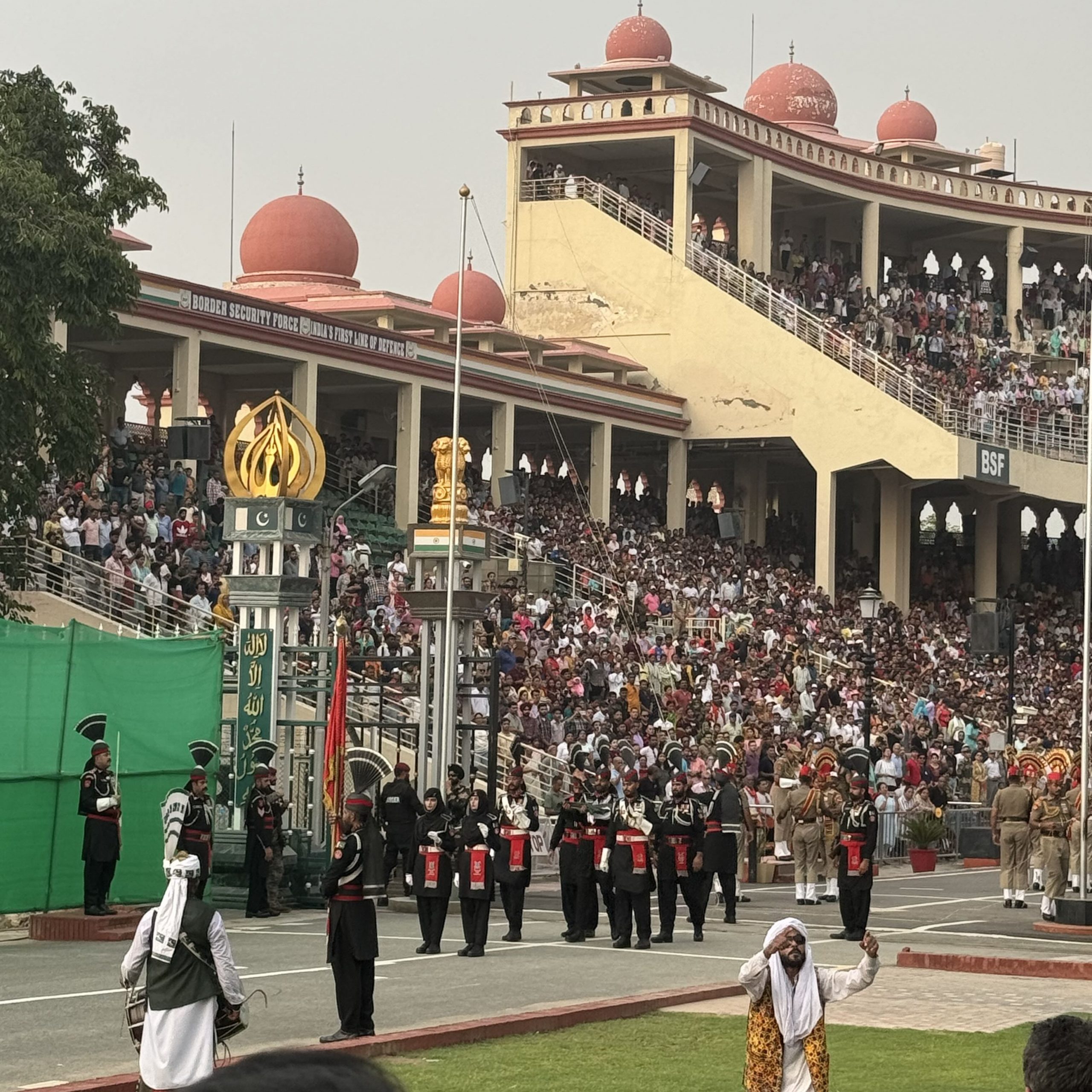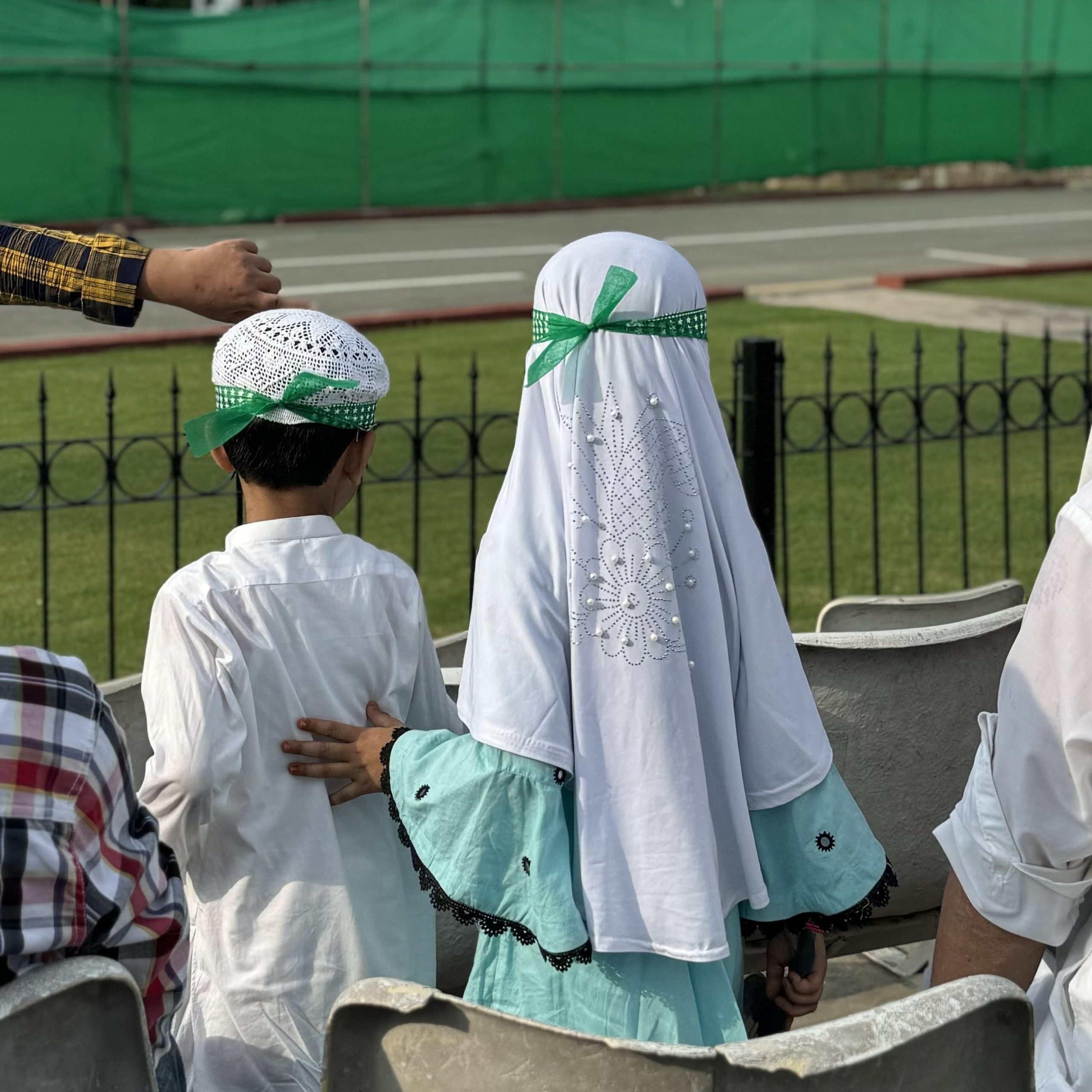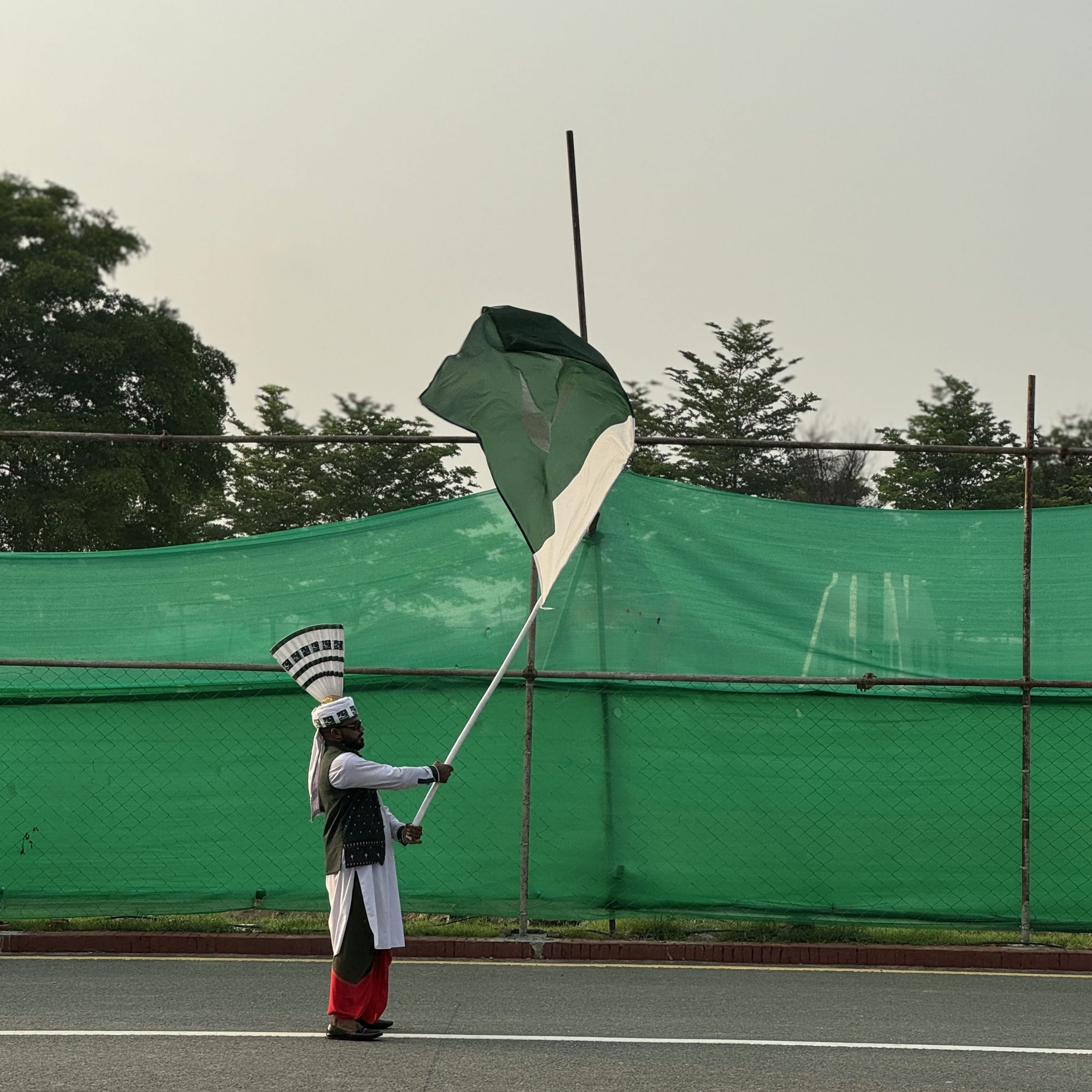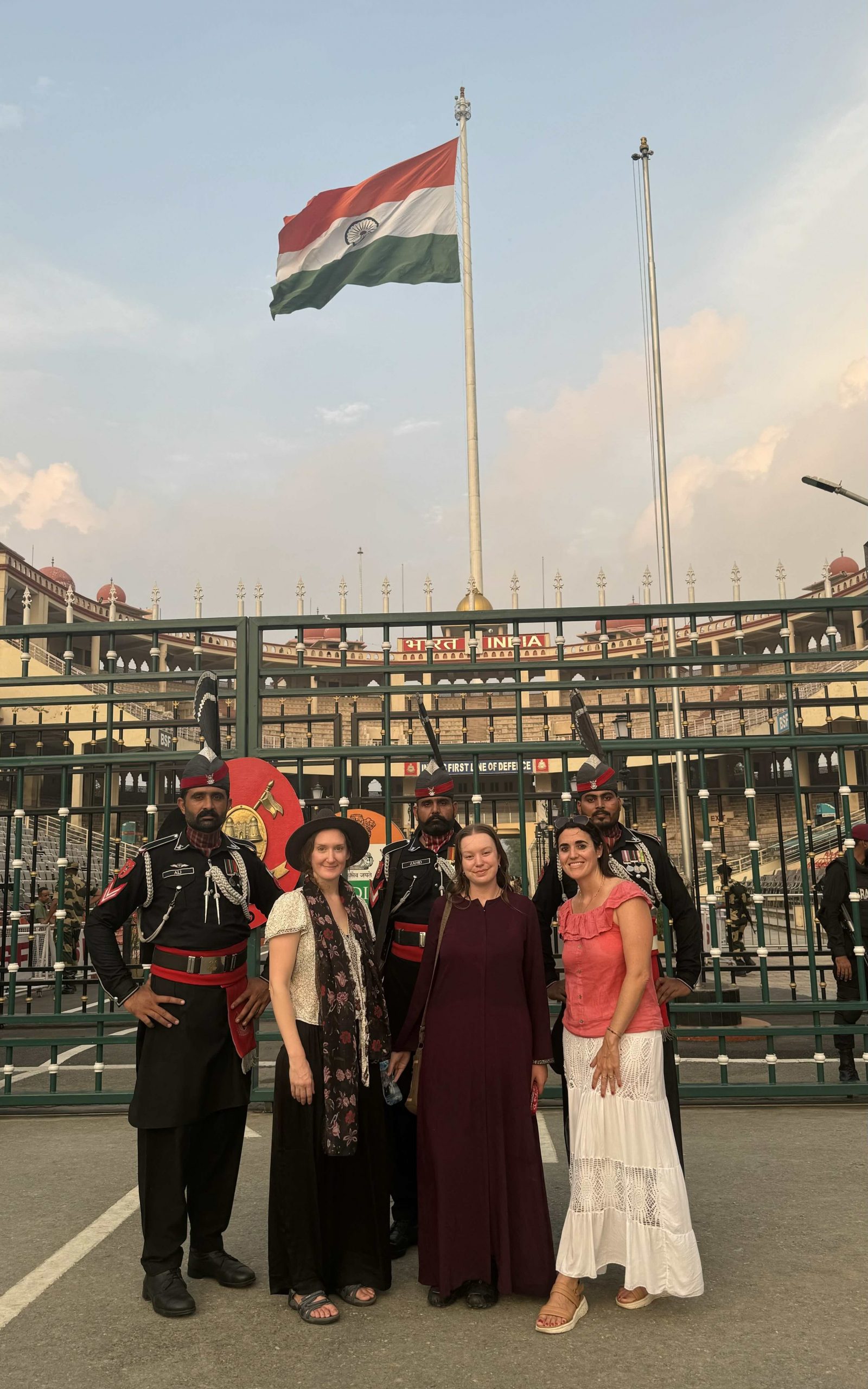The Wagah border ceremony is famous for its stark display of nationalism on either side. Whether you are on the Indian side and singing Hindi songs boasting about the success and predicted future achievements of India, or you are on the more modest Pakistan side, with Allah Akbar and jeeva jeeva Pakistan being chanted over and over again.
The Wagah border ceremony is indeed a unique experience and frankly an odd joint venture. It is a display of two countries with deep political hatred for one another, with continued border skirmishes and outright distain for each other coming together to coordinate a 20 minute theatrical performance showcasing their military officers lowering their flags. Perhaps one of the most bizarre parts about this experience, is remembering that this ceremony takes place everyday.

History of the Wagah Border Ceremony
Indian and Pakistan relations have been fractured long before the state of Pakistan actually existed. The partition of India and the creation of Pakistan in 1947 altered the maps from one nation to a rough geographical split along ethnic and religious lines that caused mass immigration and hysteria, historical disputes and the rise of political events that threatened the stability of the region and even the world — when the use of nuclear weapons was a possibility in the 1970’s.
It is no surprise that the partition which was drawn through existing communities has caused problems still rife today. In the last couple of years alone there has been several instances of violent conflict between military officers along the large stretch of mutual land borders they share.
The border ceremony, however, has been tradition for decades. It has continued despite tragedy and threats to the event. In 2014, a suicide bomber on the Pakistan side of the border claimed the lives of 50 people.
In many ways, this is a performance – a theatrical one and one that is actually quite enjoyable to spectate. But how deep does the severance divide India and Pakistan?

Today’s Border
The divide seems deep – particularly when you look at the reality of skirmishes on the border despite Pakistan and Indias official border policies. Today, the border is used as a legitimate crossing between the two nations. However, each country is known to be notoriously strict at letting civilians of the other nationality into their country, even just for tourism. In reality, this border is used for the small amount of tourists who can legally cross the border.
Experiencing the Wagah Border Ceremony from the Pakistan Side
As previously mentioned, nationalism is at the heart of the border ceremonies. The ceremony begins roughly at 6:00pm. To get a good enough seat on the Pakistan side, you are expected to get there between 4:00pm and 4:30pm. By this time, the stands are filling up with people in green and plain clothing, with flags and fans to stand the extreme heat and humidity.
There are vendors walking around selling fans, flags, snacks, drinks and even popcorn to watch the show unfold. While you wait for the ceremony to start, you will be bombarded with noises – propaganda from each side trying to ‘one up’ the other by playing louder music and chants. There is also a variety of performers – from drummers to a one-legged dancer spinning on his leg, parading the Pakistani flag.
The ceremony starts at 6:00pm on the Pakistani side and within 15 or 20 minutes it is all over. The pent up energy, passion and pride for ones nation that was moments ago so acutely directed at antagonizing the other side is now scattered with the crowd. People leave with smiles on their faces and happy memories about cheering on their country.
The Pakistan side has a modest stand for a couple hundred of spectators – however they are in the process of building a stadium to match the grand stand on the Indian side, allowing them to host more dedicated spectators.

Reflecting on the Experience
The Wagah Border Ceremony is known for being an interesting and puzzling collaboration of two countries seemingly bound to disagree and antagonise each other in many aspects of foreign governance.
The ceremony provides a rare glimpse of collaboration between the two countries and displays national pride. While the rest of Pakistan and India may have mixed feelings about each other, many people in these countries would welcome a member of the other happily. Likewise, foreign tourists were extremely well received on the Pakistan side – many Welcome to Pakistan! wishes were exchanged and seemingly increased a sense of national pride.
You can join us in Pakistan throughout the year on group tours or private tours. A lot of people consider it unconventional or challenging to visit but at YPT we make it possible that you get the best out of your experience!
Pakistan have recently made their evisa process much simpler in a bid to increase tourism. You can find out more about the visa changes by reading this announcement.






